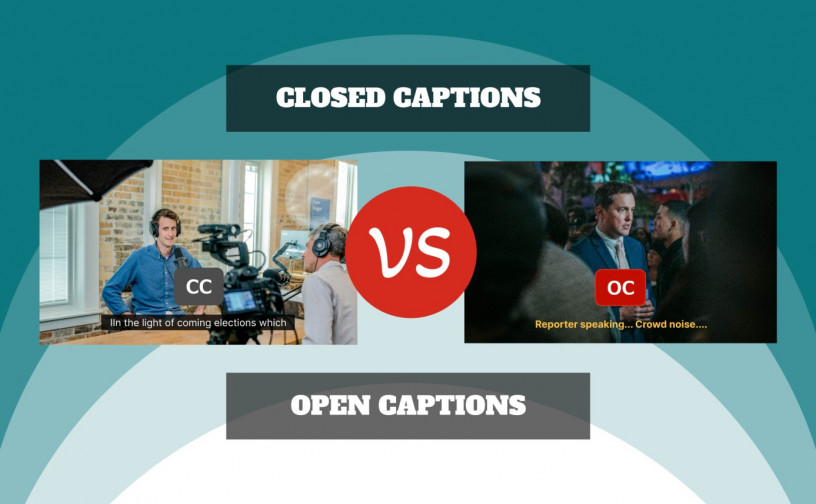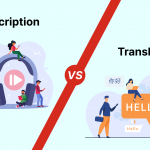
Did you know that the choice between open and closed captions in your videos could significantly impact the accessibility and engagement of your content? Whether you’re aiming to cater to the needs of the deaf and hard of hearing or enhance the overall viewing experience, understanding the nuances between open and closed captions is crucial for any video content creator.
So, ever wondered how the type of caption you choose can shape the way your audience interacts with your videos?
Making videos more accessible, captions can also help to improve the overall viewing experience. For example, captions can help viewers to understand the video’s audio better, especially if there is a lot of background noise. Captions can also help viewers to follow along with the video’s dialogue more easily, especially if the speakers are speaking quickly or with an accent.
When creating video content, it is important to understand the difference between open and closed captions and to choose the type of caption that is most appropriate for the video.
What are Open Captions?
Open captions refer to subtitles or text that are permanently embedded in a video and cannot be turned off by the viewer. Unlike closed captions, which can be toggled on or off by the viewer, open captions are burned into the video track itself and are always visible
When to Use Open Captions:
- Social Media Videos: On platforms where closed caption support varies, open captions can ensure that the message is conveyed effectively, especially when videos autoplay without audio.
- Public Spaces: In environments where videos are displayed without audio, such as waiting areas, airports, or public transportation, open captions are essential for conveying information.
- Multilingual Audiences: Open captions can assist viewers who speak different languages, providing a visual reference to help them follow the content.
- Educational Content: In educational settings, open captions can aid in learning by reinforcing spoken content and helping students better understand the material.
Advantages of Open Captions
Accessibility and Comprehension Advantages:
- Universal Accessibility: Open captions ensure that all viewers, including those with hearing impairments, have access to the content. This is crucial for making videos inclusive and reaching a diverse audience.
- Enhanced Comprehension: Open captions can improve overall comprehension, especially in situations where the audio quality is poor or the content includes complex dialogue or terminology. They provide a visual aid that reinforces the spoken words.
What are Closed Captions?
Closed captions refer to textual representations of the spoken words and audio elements in a video. These captions are typically displayed on the screen and are intended to make the content accessible to individuals who are deaf or hard of hearing, as well as those who may not be able to hear the audio in a particular environment.
When to Use Open Captions:
A. Default in Most Online Videos:
Online platforms like Facebook and Vimeo default to closed captions. Content creators upload caption files or use automated services, ensuring captions are displayed by default for broader accessibility,
B. Automated Captions on YouTube:
YouTube employs automated captioning. Uploaded videos undergo speech recognition, generating captions. While not perfect, creators can refine captions for accuracy, enhancing the experience for caption-dependent viewers.
C. Availability on Streaming Services:
Streaming services like Netflix and Hulu offer closed captions for movies, TV shows, and documentaries. Users can customize settings, enabling or disabling captions based on their preferences for an inclusive viewing experience.
D. Closed Captions on Traditional TV:
Traditional television broadcasts commonly include closed captions. Viewers adjust settings on their TVs or set-top boxes, ensuring accessibility in diverse viewing environments, from noisy public spaces to quiet homes.
Advantages of Closed Captions
- Customization: Closed captions allow viewers to customize their viewing experience by enabling or disabling the captions according to their preferences.
- Language Preferences: Viewers can choose captions in their preferred language, enhancing accessibility for a diverse audience.
- Quick Corrections: If errors are identified in closed captions, they can be promptly corrected and re-uploaded, ensuring accurate and up-to-date information is available.
Here is a table that summarizes the key differences between closed caption vs open caption:
| Feature | Open Captions | Closed Captions |
| Visibility | Always visible | Can be turned on or off |
| Best for | Social media, noisy environments | Online viewing, people who are deaf or hard of hearing |
The Power of Captioning for Inclusive Video Communication
Captions play a vital role in making video content accessible to diverse audiences. Open captions, permanently visible, are well-suited for social media and noisy environments, ensuring effective communication in situations where audio may be challenging.
On the other hand, closed captions, toggle able by viewers, cater to those who are deaf or hard of hearing, offering flexibility and customization. The choice between open and closed captions requires careful consideration of the audience and context, allowing content creators to enhance inclusivity and improve the overall viewing experience.
Encouraging the adoption of captions in video creation promotes universal accessibility and ensures that information is effectively conveyed to a broader and varied audience.
Voxtab Captioning Services: Your Trusted Partner for Affordable and Accurate Captioning
Voxtab Captioning Services stands out as a premier provider of captioning solutions, offering affordability without compromising accuracy. With a 99% accuracy rate, our team of subject matter experts ensures precise captions in over 20 languages. Whether you require captioning for business presentations, legal proceedings, or academic content, Voxtab delivers world-class quality.
Additionally, we specialize in industry-specific solutions, catering to call centers, consulting, medical, education, marketing, and AI training. Acknowledged globally with awards like the BIZZ Award and Korea Consumer Satisfaction Index Award, Voxtab is your go-to partner for reliable and cost-effective captioning services. Moreover, if you wish to make your videos more accessible to a wider audience, we offer comprehensive closed caption services.
By providing accurate captions, we can help you increase viewer engagement and broaden your viewer base. Elevate your content accessibility with Voxtab—explore our captioning services and experience the difference in captioning for an enhanced viewer experience.
open vs closed captions








Share your thoughts